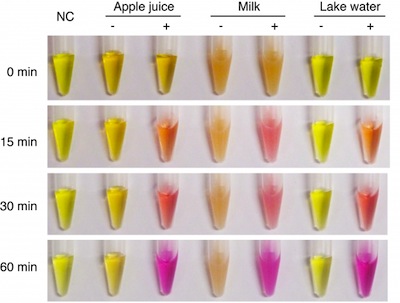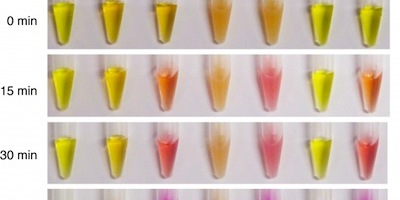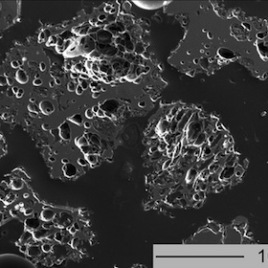
In these test samples, those labelled ‘+’ have E. coli bacteria present, while those labelled ‘-’ do not. A chemical agent couples the presence of bacteria to changes in pH, which in turn is associated with a colour change via a standard litmus test. The system provides a simple, cheap and effective test for the presence of harmful bacteria. (Photo credit: Kha Tram)
Researchers have developed a way to use litmus paper – which changes colour to indicate high or low pH – to provide a simple and effective test for bacteria like E. coli.
The team used tiny strands of DNA to create probes that are activated in the presence of bacteria. The activated probes then catalyse a reaction that lowers the pH, which can be detected by a simple litmus test.
The low-cost technique could be especially useful in the developing world where lab facilities for bacterial detection are scarce.
Photos and videos are available here.
Original research paper published in the journal Angewandte Chemie (International Edition) on September 11 , 2014.
Names and affiliations of selected authors


